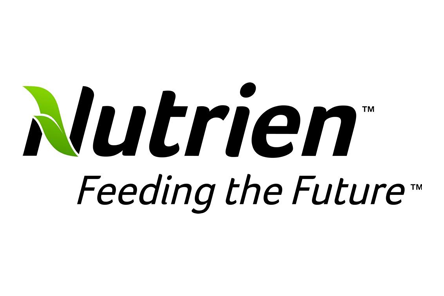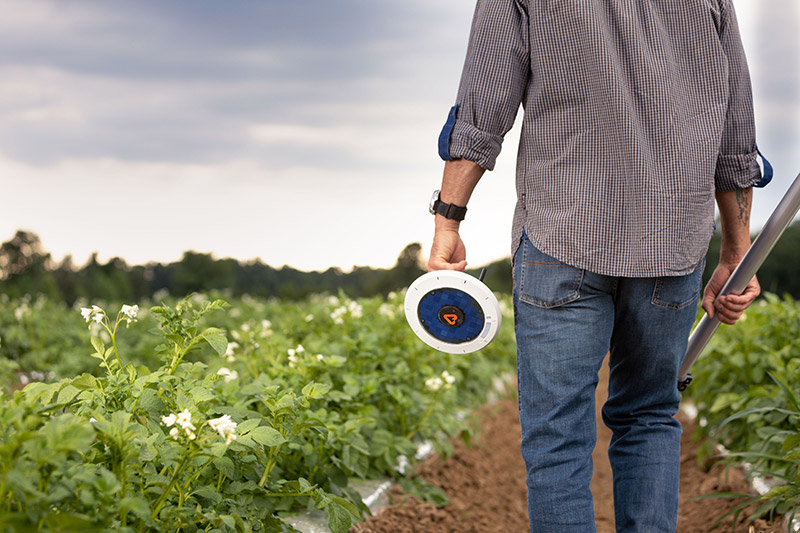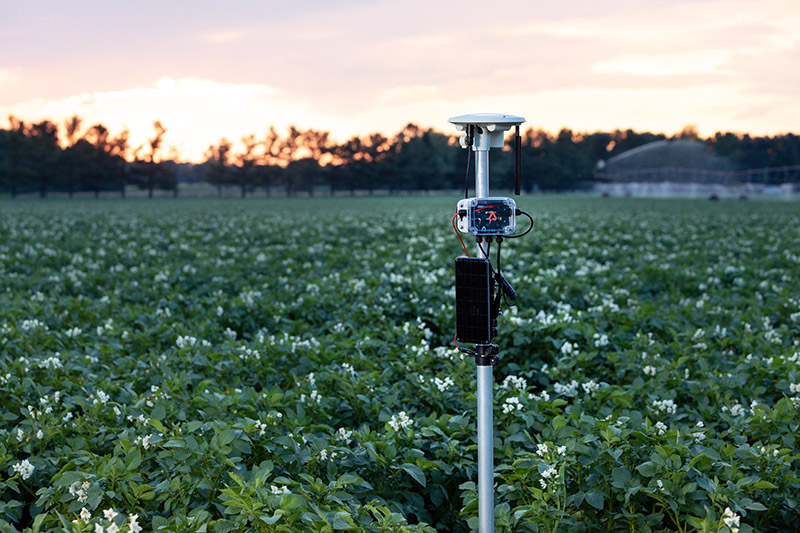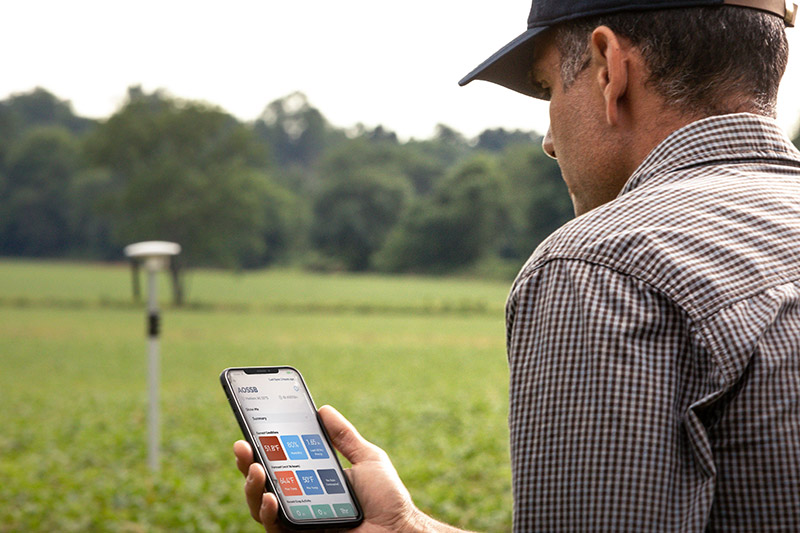Rich In-field Data Changes Minds and Drives Business Value

“Grower feedback has been really positive. They like the devices, they like the ease of the data, and giving them real-time information makes it a lot easier.”
Paul Keevers, Agronomist, Nutrien Ag Solutions
Objective
Leverage agritech to mitigate and manage unpredictable field conditions … and convince grower customers that shifting to data-driven decision making is well worth the time, cost, and learning curve.
Challenges

Nutrien Ag Solutions, the retail arm the world’s largest provider of crop inputs and services, leverages science, technology and innovation to push toward systemic change and sustainable agriculture. For local, boots-on-the-ground expertise in the Australian market, they rely on Combined Rural Traders (CRT), a consortium of suppliers that offer Nutrien products as part of their retail mix.
Formed in 1970, CRT is a network of 650 independent suppliers and 270 agronomists who sell and consult across the continent. It’s the largest rural retailing group in the country, with products for irrigation, crop protection, animal systems, and general farm merchandise, much of it recommended and sold by local ag experts who bring years of deep, hands-on knowledge. Though now a subsidiary of Nutrien, CRT stands alone as an independent brand and alliance of individual small businesses.
The Deployment
CRT Sales Agronomist Paul Keevers decided to pilot three Arable Mark devices to track and capture weather and irrigation data, and see how it could enhance his customer offerings. He spent a year partnering with a few growers, moving devices through multiple peanut and potato microclimates, and envisioning how other measurements could help lead agronomic decision-making.
“The ability to move the Arable Mark devices in and out of fields is just fantastic.”
PAUL KEEVERS, AGRONOMIST, NUTRIEN AG SOLUTIONS
The Challenge
Known as the Sunshine State, Queensland is home to about 30,500 agricultural businesses in industries that annually contribute more than A$10 billion to the state’s economy. Crops and climate are variable; they grow a mix of commodity and high value specialty items, in tropical or subtropical conditions, spread over three seasons or year-round.
This mix means fields are both rainfed and irrigated. Though water management is key, rainfall is highly variable with extremes of flood or the prolonged drought that has dried out much of the state for nearly a decade. Along the northern coast, there’s also a high risk of damage from tropical cyclones. Fold in scattered microclimate conditions, along with increasingly unpredictable and intense climate events, and the value of nuanced infield weather readings becomes clear.
Traditional weather stations are cumbersome and time-consuming to deploy and maintain, making them stationary by default.
Despite a growing need for hyperlocal data, Paul estimates that 95% of Queensland growers do not use personal weather stations, and those who do don’t believe they provide enough ease and insight to justify the expense. Traditional weather stations are cumbersome and time-consuming to deploy and maintain, making them stationary by default even though they could be moved from field to field.
While these traditional weather station traits do not apply to Arable Mark devices, they present a challenge in mindset because the technology is unprecedented and new to the market. Growers may be skeptical of the simplicity of the device, or unfamiliar with how to use data, or the level of precision that comes with it. As a result, they may be hesitant to push the button and fire it up for the first time.

The Goal
Having built and maintained relationships in rural farming communities his entire career, Paul saw an opportunity. He knew his word went a long way, but he needed to be sure about Arable and the promised innovations and insights before recommending it to loyal customers. He couldn’t risk losing credibility, or worse, tarnishing his integrity. If it didn’t deliver, he’d damage the key driver to his business model. But if Arable lived up to its promise, he could burnish current customer connections and establish new relationships with growers who would also buy fertilizer, chemicals, and seed from him, hopefully year after year. In this way, Arable had the potential to boost his bottom line.
Paul sees agritech as a valuable tool and likes the idea of CRT being at the forefront of industry innovation. Since the tight-knit communities where he consults are steeped in generations of rich farming history, Arable needed to be introduced authentically in a way that’s tried and true. He had to prove it was worth the time, money and learning to use the Arable Mark and its data to drive decisions. While there’s no denying the need to mitigate and manage unpredictable field conditions, a shift to data-driven field management would need to bring good—preferably better— results than current agronomic methods.
Combine scattered microclimate conditions with increasingly unpredictable and intense climate events, and the value of nuanced in-field weather readings becomes clear.
The Strategy
Paul worked with his customers to determine which data would be most important to them and see how it could add value over time. He deployed three Mark devices in potatoes and peanuts, commodity crops that are relatively intensive with opportune points for data to be collected.

Deploying devices in different parts of the fields over a year, Paul performed a real-time demo. Temperature readings sparked frost alerts in the cool elevated plateau of the Atherton Tablelands while heat combined with rainfall data to inform water balance and irrigation diaries. Localized NDVI measurements were used to identify struggling patches to drive out and check instead of scouting the whole field to find them. At any time of day, all of the information popped up in Arable’s easy, phone-based interface for all to discuss.
While Paul focused on temperature and rainfall data in potatoes and peanuts, the potential for more analyses was also on tap. For example, a deep dive into leaf wetness could influence fungicide management, an area where using less is more. “Because we’re in a high rainfall, tropical, subtropical environment, our fungal load is quite high,” Paul explains. “That leaf wetness index, over time, will give us a better capability of timing, spray applications, and where we actually need to apply our fungicides instead of just canopy spraying.”
The Results
“The devices work really well. Grower feedback has been really positive, which is fabulous. Giving them real-time information makes it a lot easier.”
PAUL KEEVERS, AGRONOMIST, NUTRIEN AG SOLUTIONS
While using the level of data that Arable provides as a management tool was new to Paul’s customers, the system’s simplicity ultimately won them over. “The big thing was the connectivity, the ability to just look at it on the phone and say, ‘Yep, here we go, this is what we need to do.’ It was just a simple check,” Paul says. “That was one of the big turn-ons.”
The size and portability of the device—it’s a two-kilo device on top of a pole that pushes into the ground in minutes—also proved to be advantageous. “The ability to move them in and out of fields is just fantastic,” Paul says, explaining that he could deploy year-round in multiple trials, another big plus in the Queensland climate.
On the other hand, customers didn’t have to move it if they didn’t want to. During spray applications, Paul said it’s easy to flag the Mark’s location on GPS, lift the boom, and keep going.
Hardware mechanics aside, it’s the rich infield weather data and the decisions it facilitates that make Arable an indispensable tool. “On the heat side, it gives us the ability to put that irrigator on a little bit faster to try and take some of that heat out of the crops,” Paul says. “It also helps when things cool down. Where we are on the Atherton Tablelands we’ll actually frost in winter. We’ve got a big variation, so that colder temperature alert system is quite handy for us.”
And then there are the predictions: local, relevant, and based on exactly what’s happening right where you are. “When we dive into the data based on the unit’s location, we can actually get a forecast of about 14 days out based on what’s happening with temperature and rainfall,” Paul says. “And to be honest, it’s pretty accurate. It’s better than most of the stuff I’ve seen in Australia.”

The Outcome
With his first year piloting Arable at a close, Paul is starting to think about what’s next. He’s considering adding anemometers and soil probes for even more infield insights, but mainly he’s convinced that Arable helps him expand customer relationships. “I look at this tool as a bolt onto what we do to improve our customer relationships and maintain them,” Paul says. “It’s almost like its own little marketing tool to keep you rolling.”
“The leaf wetness index, over time, will give us a better capability of timing, spray applications, and where we actually need to apply our fungicides instead of just canopy spraying.”
PAUL KEEVERS, AGRONOMIST, NUTRIEN AG SOLUTIONS
In fact, Paul says he’s had more conversations about Arable and agritech in general and the benefits it has provided to crop management and profitability. Customers are coming to him with questions having seen Arable in their neighbor’s fields who have been able to highlight deficiencies that have resulted in an increased profit margin of over 20% in some cases. When dealing with a crop like potatoes that is worth A$25,000 per Ha these gains are significant.
Since his circles are tight, his expertise shines through when products he recommends work well and bring value in the field. It positions him as more of an agronomic partner than just the guy they call when they need inputs. “The devices work really well. Grower feedback has been really positive, which is fabulous,” Paul says. “They like the devices, they like the ease of the data, and giving them real-time information makes it a lot easier.”